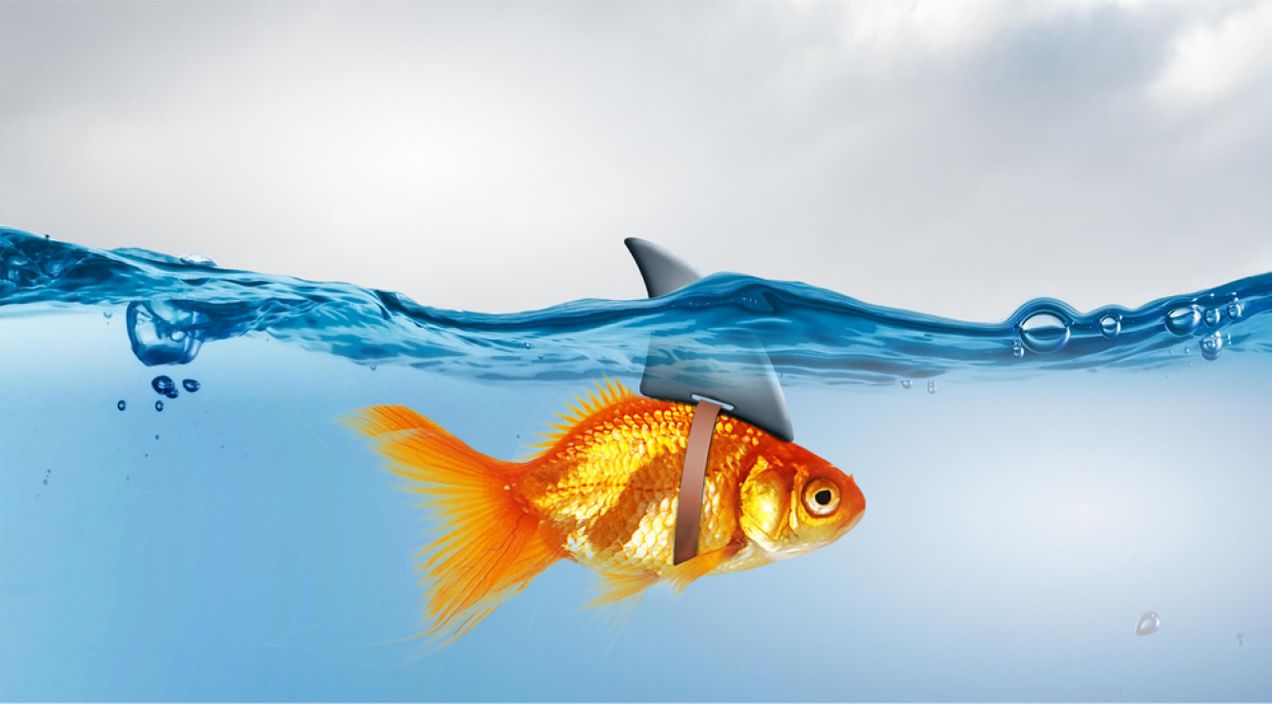150+ Outdoor team-building activities, events, and games for employees in 2025
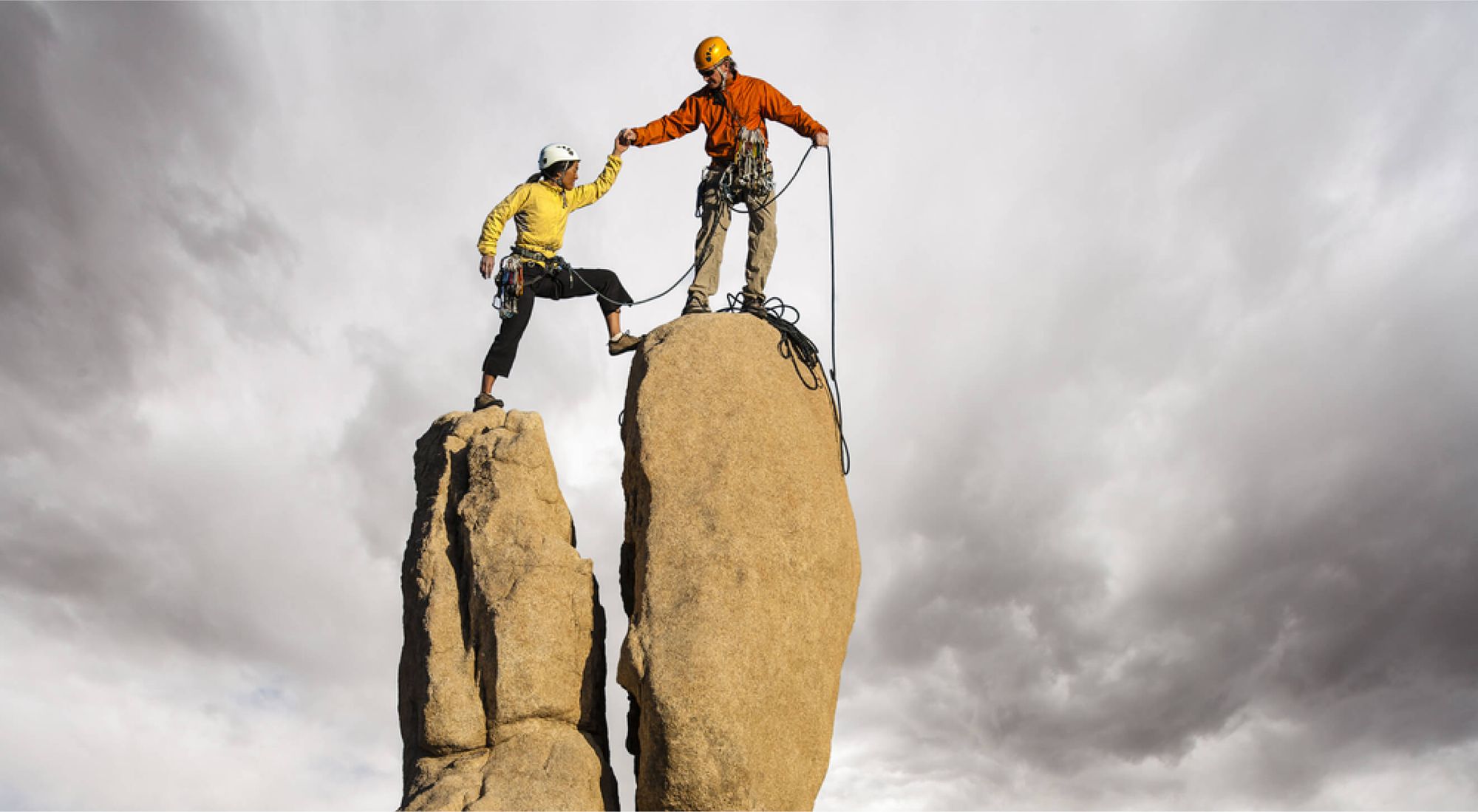
Think back to childhood—those long summer days when you and your neighborhood friends plotted the ultimate scavenger hunt. There were no rules (except the ones you made up), no managers (except that one kid who insisted on being in charge), and no prizes beyond bragging rights.
But somehow, everyone played their part, strategized, and came together for a common goal. You didn’t think about teamwork—you just did it.
Now, imagine bringing that same effortless camaraderie into the workplace (minus the scraped knees and melted popsicles). Outdoor team-building activities tap into that same sense of adventure, pushing teams to bond, problem-solve, and—dare we say—actually enjoy the experience.
So, if you’re looking for ways to break the monotony, strengthen collaboration, and get your team out of their comfort zone, here are 150+ activities to make it happen in 2025.
What is a team-building activity?
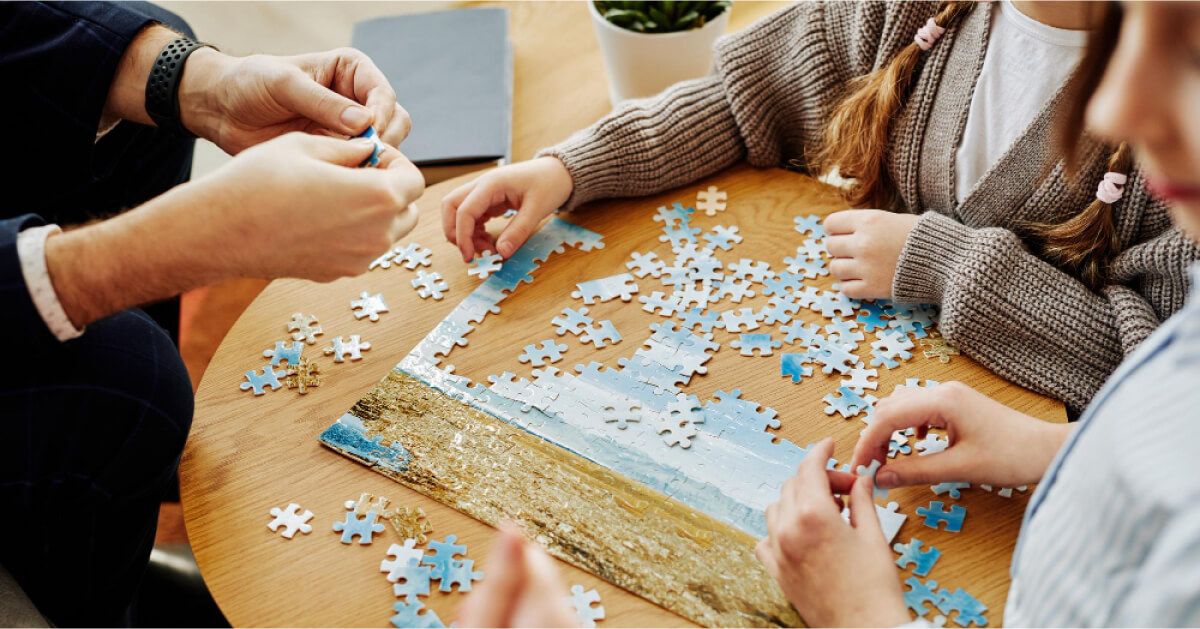
Team building is the intentional process of bringing individuals together to strengthen collaboration, trust, and communication. It goes beyond daily tasks, creating opportunities for employees to connect, problem-solve, and build camaraderie.
Whether through strategic challenges or outdoor adventures, team-building activities help transform a group of individuals into a cohesive, high-performing team. At its heart, team building is about unity—encouraging colleagues to work together, develop mutual understanding, and support one another.
These activities range from problem-solving exercises to interactive games, each designed to foster a sense of belonging and shared purpose. More than just a fun break, team-building initiatives shape workplace culture. They create an environment where communication flows effortlessly, collaboration feels natural, and employees feel valued.
By investing in team-building, organizations cultivate stronger connections, increased engagement, and a team that thrives together—both in and out of the workplace.
Why outdoor team-building activities are a game changer?
Unlike traditional indoor sessions, team-building outdoor activities bring fresh energy, creativity, and camaraderie to the workplace. Getting teams outside the office fosters collaboration, enhances morale, and makes problem-solving more dynamic. Whether it's an outdoor fun activity or strategic team games outside, here’s why these experiences are a must for modern teams.
- Encourages active engagement: Outdoor settings naturally boost energy levels and participation. Unlike boardroom activities, team-building activities outside promote movement, interaction, and hands-on problem-solving, ensuring everyone is fully engaged.
- Boosts team morale and collaboration: Shared challenges in outdoor teambuilding games strengthen workplace bonds. Whether tackling an obstacle course or playing group games outdoor activities, employees learn to trust and rely on one another in a fun environment.
- Enhances creativity and innovation: The open space and natural environment of games for team-building outdoor help teams think outside the box. Fresh air and movement inspire new ideas, making outdoor team-building games no equipment a great way to spark innovation.
- Breaks routine and reduces stress: Changing the setting from office walls to an outdoor fun activity provides a mental reset. Studies show that time spent outdoors lowers stress, which is why outdoor games for office employees can improve well-being and focus.
- Caters to all team sizes and preferences: Whether through quick outdoor team-building activities or more structured exercises organized by outdoor team-building companies, these events can be tailored to suit diverse groups, making them highly inclusive.
- Strengthens problem-solving and adaptability: Team-building outdoor activities require teams to think on their feet. From scavenger hunts to strategy-driven competitions, these events refine decision-making and adaptability, key skills for any workplace.
What are the 4 main types of team-building activities?

There are four main types of team-building activities, each designed to achieve specific goals and enhance different aspects of teamwork and collaboration. These categories encompass a range of activities that cater to various preferences and team dynamics:
- Communication activities: These activities focus on enhancing communication skills among team members. They encourage effective listening, clear expression of ideas, and active information sharing to improve overall communication within the team.
- Problem-solving activities: Problem-solving activities challenge teams to work collaboratively to overcome challenges and find innovative solutions. These activities promote critical thinking, creativity, and decision-making skills.
- Trust-building activities: Trust-building activities are designed to cultivate trust and cooperation among team members. They often involve activities that require individuals to rely on one another, fostering a sense of reliability and mutual trust.
- Team bonding activities: Team bonding activities aim to strengthen relationships, boost team morale, and create a sense of unity. These activities are enjoyable and help team members connect on a personal level, contributing to a positive team atmosphere.
How do team-building activities benefit employees?
Team-building activities offer several significant benefits to employees, contributing to their professional development, job satisfaction, and overall well-being. Here are key ways in which team-building activities benefit employees:
- Enhanced communication skills: Team-building activities facilitate improved communication among employees. By engaging in collaborative tasks or challenges, team members learn to articulate ideas effectively, listen actively to others, and provide constructive feedback.
- Strengthened relationships: Participating in team-building activities fosters stronger relationships among colleagues. When employees work together outside their usual roles and responsibilities, they build trust, empathy, and mutual respect. These connections create a supportive work environment.
- Boosted morale and motivation: Engaging in enjoyable and rewarding team-building activities boosts employee morale and motivation. These activities provide a break from routine tasks, alleviate stress, and create a positive atmosphere where employees feel appreciated and valued.
- Developed problem-solving skills: Many team-building activities involve problem-solving challenges that require creativity and critical thinking. Employees learn to approach problems from different angles, brainstorm solutions as a team, and adapt strategies based on feedback.
- Increased collaboration: Team-building activities encourage collaboration among employees from different departments or levels within the organization. By working together towards a common goal, employees gain insights into each other's strengths, expertise, and perspectives.
- Promoted leadership skills: Some team-building activities provide opportunities for employees to demonstrate leadership qualities. Whether leading a team task or taking on a supportive role, employees can develop leadership skills such as decision-making, delegation, and conflict resolution.
- Improved team dynamics: Participating in team-building activities helps clarify roles and responsibilities within teams. Employees understand each other's strengths and weaknesses, which promotes better coordination and cooperation on projects.
- Healthy competition and fun: Incorporating elements of healthy competition and fun into team-building activities can energize employees and create memorable experiences. Activities that challenge individuals to strive for excellence while enjoying the process contribute to a positive work culture and reinforce organizational values.
Mistakes to avoid when organizing outdoor team-building activities
Planning team-building activities outdoor can be exciting, but without careful preparation, things can go wrong. To ensure a smooth and successful event, avoid these common mistakes when organizing outdoor team games that promote engagement, collaboration, and fun.
- Not defining clear objectives: Every team-building game outdoor should have a clear goal—whether it’s improving communication, problem-solving, or leadership skills. Without a purpose, activities may feel random and fail to provide value to participants.
- Choosing activities that exclude some team members: Some employees may have physical limitations, so avoid planning only physical team-building activities that require strength or endurance. Instead, mix in outdoor problem-solving activities to ensure everyone can participate.
- Failing to prepare for logistics and timing: Poor planning can lead to delays and disorganized sessions. Always plan the schedule carefully, ensuring outdoor group activities have clear time slots, locations, and facilitators to keep the event on track.
- Not having a contingency plan for weather issues: Outdoor events are unpredictable. A sudden downpour or excessive heat can ruin outdoor team-building games if there’s no backup plan. Always have an alternative indoor activity ready.
- Overcomplicating the activities: While complex challenges can be exciting, overly complicated outdoor games for employee engagement can frustrate participants. Keep team games outdoor simple, engaging, and easy to follow.
- Ignoring post-event feedback and reflection: A great team-building activity outdoor doesn’t end when the game is over. Always gather feedback to understand what worked, what didn’t, and how to improve future outdoor team-building games for maximum impact.
What is an outdoor team building activity?
An outdoor team-building activity is a collaborative event held in open spaces like parks, forests, or fields, designed to promote teamwork, communication, and relationships among team members. These activities introduce an element of adventure, encouraging participants to step out of their comfort zones and work toward shared goals.
By incorporating physical challenges, problem-solving tasks, and experiential learning, outdoor activities foster stronger team dynamics and a sense of accomplishment. The change of scenery breaks the monotony of the office, allowing employees to reconnect with nature, boost creativity, and feel refreshed.
Outdoor team-building activities vary in complexity and purpose. Some focus on trust and cooperation, while others emphasize leadership and decision-making. Their versatility makes them ideal for teams of all sizes, and they can be easily organized with the help of a business travel company or event planner, ensuring a seamless and impactful experience for everyone involved.
What outdoor activities promote?

Outdoor team-building activities might seem like a waste of time for a super-productive person. But haven’t we heard “All work and no play makes Jim a dull boy.”
On a serious note, there are tons of benefits of conducting outdoor team-building activities at workplace, let’s name a few:
- Collaboration: Engaging in outdoor events foster collaboration by placing participants in situations where they must work together to achieve common objectives. Collaborative efforts are essential for navigating challenges, dividing tasks, and pooling individual strengths.
- Problem-solving: Outdoor activities provide a platform for honing problem-solving skills. Participants encounter unfamiliar scenarios that demand innovative solutions. These challenges encourage critical thinking, adaptability, and the ability to assess situations from multiple angles.
- Leadership skills: Outdoor activities offer opportunities for individuals to showcase and develop their leadership skills. As participants navigate outdoor challenges, emerging leaders naturally step forward to guide the team. These individuals make decisions, delegate tasks, and inspire their colleagues to persevere.
- Communication: Effective communication is crucial to avoid misunderstandings, coordinate actions, and ensure the safety and success of the team. As team members practice clear and concise communication amidst outdoor challenges, they refine their communication skills.
- Trust building: As participants navigate unfamiliar terrain or conquer physical obstacles together, they witness each other's commitment, competence, and support. This shared reliance fosters mutual respect and a sense of vulnerability, leading to stronger interpersonal bonds.
Outdoor team-building activities for small vs. large teams
Whether organizing team-building activities outside for a small department or a large company-wide event, selecting the right approach is crucial. Small teams thrive in outdoor fun activities that promote deeper connections, while large teams benefit from structured corporate team-building games outdoor that keep everyone engaged. Here’s how to tailor activities for both.
Outdoor team-building activities for small teams
- Focus on collaboration and problem-solving: Small teams are ideal for outdoor problem-solving activities like scavenger hunts or outdoor escape rooms. These fun outdoor team-building activities promote close interaction and critical thinking.
- Create personalized experiences: With fewer participants, small teams can enjoy team bonding events such as hiking, kayaking, or camping. These outdoor activities for office employees build trust and camaraderie in a relaxed setting.
- Opt for quick and flexible activities: Quick outdoor team-building activities like storytelling circles, trivia games, or blindfolded trust walks require minimal setup while keeping engagement high. These activities are perfect for tight schedules.
Outdoor team-building activities for large teams
- Encourage structured competition: Large teams thrive on high-energy team games outside, such as relay races, obstacle courses, and outdoor team-building games no equipment required. These keep the entire group engaged and active.
- Leverage breakout groups: Splitting large teams into smaller units helps manage logistics while keeping everyone involved. Activities like group outdoor activities or sports tournaments allow teams to compete while fostering teamwork.
- Maximize participation with rotational stations: Setting up multiple outdoor games for office employees ensures every participant has a chance to engage. By rotating through different challenges, large teams get the best of team-building outdoor activities while avoiding downtime.
How to plan and organize outdoor team-building activities at the workplace?
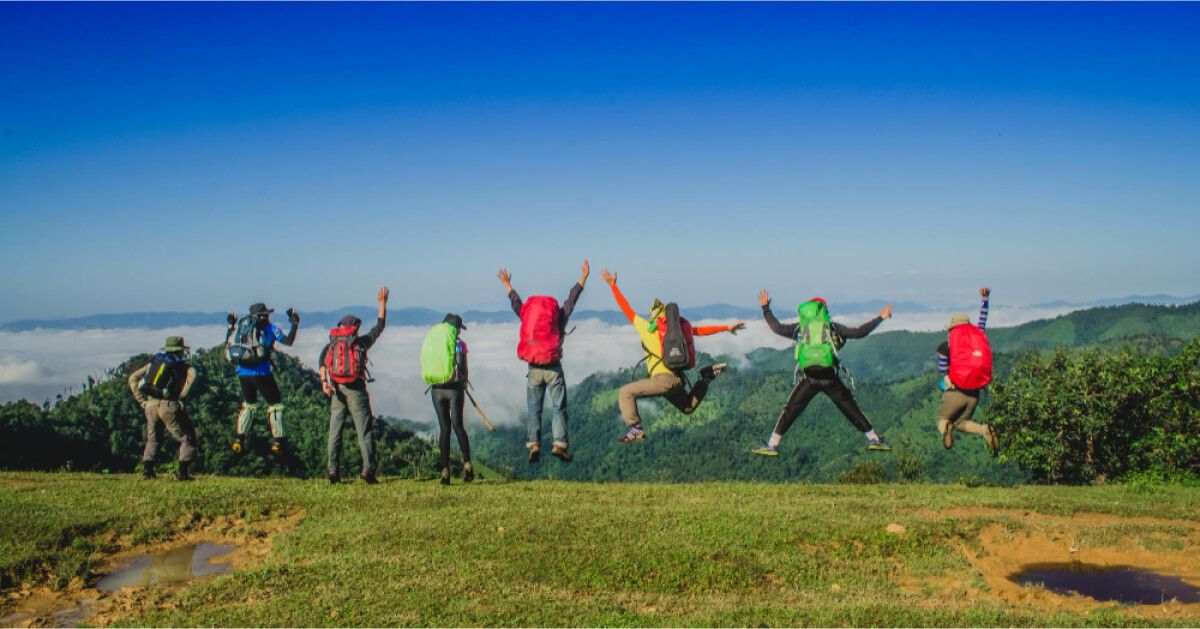
Planning an outdoor team-building activity requires attention to detail, ensuring engagement, safety, and effectiveness. Follow these steps to create a seamless and impactful experience:
- Define objectives and goals: Clearly outline what you want to achieve—better communication, trust, or problem-solving skills. Establish specific goals to measure the success of your physical team-building activities and align them with your company’s needs.
- Know your team: Consider your team’s preferences, abilities, and limitations when choosing outdoor group activities. A well-planned event ensures outdoor games for employee engagement are enjoyable and inclusive for all participants.
- Choose the right activity: Select team-building games outdoor that fit your goals, whether it’s outdoor problem-solving activities or interactive workshops. Ensure the activity suits the group’s size, dynamics, and comfort levels.
- Select a suitable location: Pick an outdoor venue that complements the activity—parks, forests, or open fields work well for team-building activities outdoor. Check for necessary facilities, accessibility, and safety measures.
- Plan logistics: Set the date, time, duration, and transportation plan. Gather any required materials for team games outdoor to ensure a hassle-free and well-organized event for all participants.
- Allocate roles and responsibilities: Designate team members to oversee coordination, safety, and activity facilitation. Assign leaders to guide outdoor team games smoothly and ensure an engaging experience.
- Communicate and prepare participants: Inform participants about the event details, dress code, and what to bring. Ensuring everyone is prepared for outdoor team-building games enhances engagement and enjoyment.
- Safety first: Conduct a risk assessment and prepare emergency procedures. Have a first aid kit on-site to ensure team games outdoor are fun and safe for all participants.
- Facilitate the activity: Ensure facilitators are well-prepared to guide outdoor problem-solving activities effectively. Provide clear instructions and encourage teamwork throughout the event.
- Debrief and reflect: Hold a post-activity discussion to gather insights and feedback. Reflecting on outdoor games for employee engagement helps improve future events and fosters continuous team growth.
What are the 3 categories of outdoor activity?

Outdoor activities can be broadly categorized into three main categories based on their nature, purpose, and level of physical engagement:
1. Recreation and leisure activities:
This category encompasses outdoor activities primarily pursued for enjoyment, relaxation, and personal satisfaction. These activities often involve low to moderate physical exertion and are popular choices for individuals and families looking to unwind and have fun.
Examples include picnicking in parks, playing team building outdoor games like frisbee or volleyball, birdwatching, stargazing, and enjoying scenic hikes on well-maintained trails. Recreation and leisure activities promote mental well-being, stress relief, and a connection with nature.
2. Adventure and extreme activities:
Adventure and extreme outdoor activities are characterized by their high levels of physical challenge, risk, and adrenaline-pumping excitement. Participants seek thrill and adventure in activities like rock climbing, white-water rafting, bungee jumping, skydiving, and mountain biking.
These activities often require specialized skills, equipment, and training, and they provide an opportunity to push one's limits and conquer fears while experiencing a sense of achievement.
3. Outdoor education and exploration:
Outdoor education and exploration activities focus on learning, skill development, and environmental awareness in natural settings. These activities include wilderness survival training, orienteering, botany and wildlife studies, and guided nature walks.
Participants gain valuable knowledge about ecosystems, wildlife, and outdoor survival skills while fostering an appreciation for the environment and the need for conservation.
Each of these outdoor activity categories offers a diverse range of experiences, catering to different interests, skill levels, and objectives. Whether seeking relaxation, excitement, or educational enrichment, individuals can find outdoor activities that align with their preferences and goals.
150+ Fun outdoor team building activities ideas you must try for both small and large groups
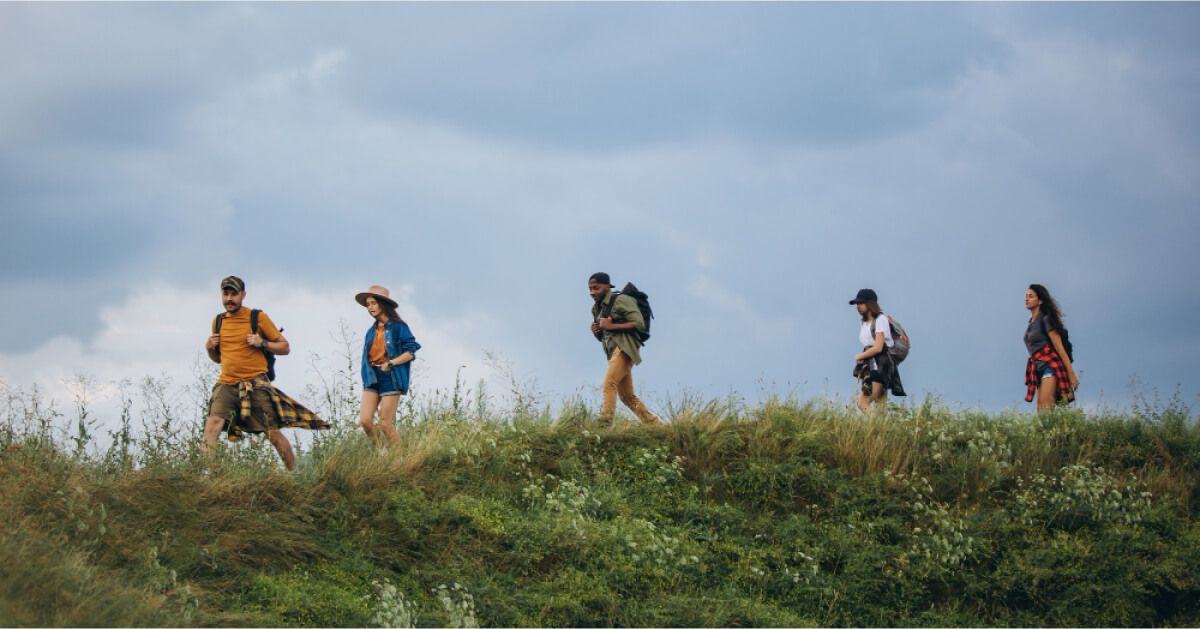
Certainly, here's a list of 150+ fun outdoor team-building events or activities, along with explanations and examples of how to play each game.
1. Scavenger hunt:
Divide the team into small groups and provide them with a list of items or clues to find in the outdoor area. The goal is to locate all items within a set time frame. This activity encourages problem-solving, teamwork, and creativity as participants work together to decipher clues and find hidden treasures.
Example: Provide each group with a list of items like a pinecone, a blue feather, and a smooth rock. Include riddles or clues that lead to the items. As teams collect the items, they can exchange them for points. The team with the most points at the end would wind up being the winning team. That is scavenger hunt.
2. Team obstacle course:
Set up an obstacle course in an outdoor space with challenges like crawling under ropes, balancing on beams, and jumping over obstacles. Teams must complete the course as quickly as possible while helping each other through the challenges. This activity builds trust, communication, and collaboration.
Example: Design an obstacle course with stations that require different skills. At one station, team members can help each other balance on a narrow beam. At another station, they might need to work together to lift a heavy object. The team that completes the course with the fastest time wins.
3. Human knot:
Participants stand in a circle, reach across and hold hands with two different people. The challenge is to untangle the knot without letting go of hands. This activity promotes communication, problem-solving, and physical coordination.
Example: Have a group of 10 people stand in a circle. Each person reaches across to hold hands with two different people. The group must then work together to untangle the knot without releasing their grips.
4. Capture the flag:
Divide the group into two teams. Each team has a flag hidden in their territory. The objective is to steal the opposing team's flag and return it to your own territory without being tagged by opponents. This outdoor team-building game enhances strategy, teamwork, and tactical thinking.
Example: Set up a playing field with boundaries and designate each team's territory. Hide the flags well within each territory. Players strategize on offense and defense, deciding when to retrieve their own flag or tag opponents.
5. Outdoor escape room:
Create an outdoor version of an escape room with puzzles, riddles, and challenges. Teams work together to solve clues and complete tasks to progress through the course and "escape." This activity encourages critical thinking, collaboration, and creativity.
Example: Design a trail with hidden clues. To unlock the next clue, teams must solve a puzzle or perform a task. The final clue leads to a hidden treasure or location where the game concludes.
6. River crossing:
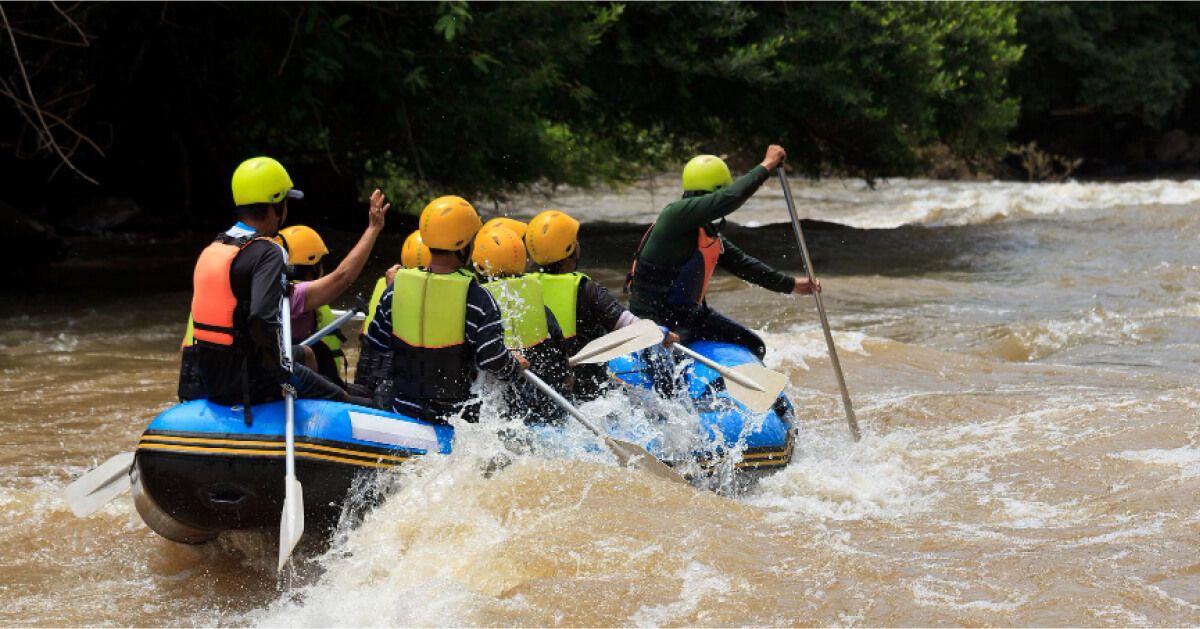
Set up a simulated river using ropes or marked areas. Teams must devise a strategy to cross the "river" using limited materials without anyone stepping inside the river. This activity requires planning, communication, and problem-solving.
Example: Provide each team with a few planks of wood or stepping stones. They must figure out how to arrange the materials to create a bridge across the "river" while ensuring no team member touches the ground.
7. Trust fall:
A classic trust-building activity. One participant stands with their eyes closed, arms crossed over their chest. They fall backward, relying on their teammates to catch them. This activity promotes trust, communication, and mutual support.
Example: Assign one participant as the "faller" and others as catchers. The faller stands on a designated spot, crosses their arms, and falls backward, relying on their teammates to catch them safely.
8. Group juggle:
Participants stand in a circle. One person starts with a ball and throws it to someone else, calling their name. The receiver then throws the ball to someone else. The goal is to keep the ball moving while remembering each person's name. This activity enhances memory, attention, and communication.
Example: The first team or person starts by throwing the ball to the person on their right while calling out their name. The receiver catches the ball, says the name of the next person they're passing to, and throws the ball.
9. Helium stick:
Participants form two lines facing each other, holding a long PVC pipe parallel to the ground using only their index fingers. The challenge is to lower the pipe to the ground without losing contact. This activity emphasizes communication, coordination, and patience.
Example: Divide participants into two lines, each holding onto the pipe. As they try to lower the pipe together, they'll notice it mysteriously rises instead. The task requires adjusting their finger pressure, demonstrating the importance of synchronizing movements.
10. Minefield:
Set up an obstacle course with objects placed randomly. Blindfolded participants must navigate the course while being guided by verbal instructions from their teammates. This activity enhances communication, trust, and active listening.
Example: Place cones, ropes, or objects on the ground to create a path. Blindfold a participant and have their entire team guide them verbally to navigate through the "minefield" safely.
11. Paintball team battle:

Organize a paintball battle between teams. Players work together to strategize, communicate, and eliminate opponents. This dynamic activity enhances teamwork, quick decision-making, and adaptability.
Example: Divide the group into teams and provide them with paintball equipment. Set up a designated area and establish rules for gameplay. Teams strategize to capture the opponent's flag while protecting their own, using teamwork and tactics.
12. Tug of war:
Teams compete in a classic game of strength and strategy. Each team pulls on opposite ends of a rope, attempting to pull the other team across a designated line. This game builds team cohesion, determination, and coordination.
Example: Divide the group into two teams and provide them with a sturdy rope. Mark a central line on the ground and have teams pull against each other. The team that successfully pulls the other team across the line wins.
13. River rafting adventure:
Organize a river rafting experience that requires teams to paddle together to navigate rapids and challenges. This activity demands teamwork, communication, and coordinated efforts to steer the raft.
Example: Take the team on a river rafting trip, ensuring proper safety measures are in place. Each team member's paddling contributes to steering the raft and maneuvering through the water.
14. Campfire stories:
Gather the team around a campfire and have each participant share a story or experience. This activity promotes bonding, active listening, and learning more about colleagues on a personal level.
Example: Set up a campfire in an outdoor space. Each participant takes turns sharing a short story, whether it's a travel adventure, childhood memory, or a humorous incident.
15. Nature photography contest:
Provide teams with cameras or smartphones and set them on a nature photography hunt. Each team captures unique outdoor elements, showcasing creativity, teamwork, and an appreciation for nature.
Example: Give each team a list of specific items or scenes to capture, such as a beautiful flower, an interesting rock formation, or a serene landscape. The team that captures the most creative and compelling shots wins.
16. Geocaching:
Combine treasure hunting and technology by engaging in geocaching. Teams use GPS coordinates to locate hidden "caches" outdoors. This activity encourages problem-solving, navigation, and teamwork.
Example: Download a geocaching app and input GPS coordinates for hidden caches. Divide the group into teams, and each team must use their devices to find the caches.
17. Outdoor yoga session:
Organize an outdoor yoga session led by an instructor. This calming activity promotes relaxation, mindfulness, and a sense of well-being among participants.
Example: Arrange for a certified yoga instructor to lead the team through a series of outdoor yoga poses and stretches. This promotes physical wellness and a peaceful atmosphere.
18. Team tent building:
Provide teams with basic materials like ropes, tarps, and poles. The challenge is to collaborate and build a functional shelter within a time limit. This activity enhances problem-solving, teamwork, and creativity.
Example: Each team receives a set of materials and a designated area. They must work together to construct a shelter that provides protection from the elements.
19. Beach volleyball tournament:

Organize a beach volleyball tournament where teams compete against each other. This lively activity promotes teamwork, quick decision-making, and friendly competition.
Example: Set up a beach volleyball court and divide the group into teams. Teams compete against each other, strategizing to score points and secure victory.
20. Nature cleanup challenge:
Engage in an environmental initiative by organizing a nature cleanup. Teams work together to collect litter and clean up a designated area, promoting teamwork and community service.
Example: Provide each team with gloves and trash bags. Assign specific areas to clean up, and challenge teams to collect as much litter as possible within a set time frame.
21. Outdoor cooking challenge:
Teams cook meals using outdoor equipment like grills or campfires. This activity requires planning, cooperation, and creativity as teams prepare and present their dishes.
Example: Provide teams with ingredients and outdoor cooking equipment. Each team plans and prepares a meal together, showcasing their culinary and teamwork skills.
22. Team building olympics:
Create an outdoor Olympics-style event with a variety of challenges, including relay races, tug of war, sack races, and more. This activity promotes healthy competition, teamwork, and physical activity.
Example: Set up different stations with different challenges. Teams rotate through stations, competing in various activities that test their teamwork and physical abilities.
23. Giant puzzle assembly:
Provide teams with a large puzzle that needs assembly. Each team must work together to complete the puzzle as quickly as possible, emphasizing teamwork, communication, and problem-solving.
Example: Divide a large image or puzzle into sections. Each team receives a section of the puzzle to assemble. Teams must communicate and collaborate to connect their pieces and complete the entire puzzle.
24. Outdoor trivia challenge:
Organize a trivia quiz with questions related to nature, general knowledge, and team members' interests. Teams work together to answer questions, promoting communication and shared knowledge.
Example: Prepare a set of trivia questions and assign point values to each question. Teams collaborate to answer questions and earn points. The team with the most points at the end wins.
25. Blindfolded minefield:

Similar to the regular minefield activity, but blindfolded participants must rely solely on verbal instructions from teammates to navigate the course. This activity enhances communication, trust, and cooperation.
Example: Set up an obstacle course with objects on the ground. Blindfold participants and have their teammates guide them verbally to navigate the course safely.
26. Nature art gallery:
Teams create art pieces using materials found in nature, such as leaves, sticks, and rocks. The creations are then displayed in a "nature art gallery." This activity encourages creativity, collaboration, and appreciation for the environment.
Example: Provide teams with a variety of natural materials and a designated area. Teams create sculptures, paintings, or arrangements inspired by nature. The art pieces are then exhibited for everyone to admire.
27. Blind sculpture:
One team member is blindfolded while other team members give verbal instructions to guide them in creating a sculpture using clay or other materials. This activity promotes clear communication, trust, and creativity.
Example: Provide each team with a sculpting material like clay. Blindfold one team member and have the rest of the team guide them to shape the material into a specific object or figure.
28. Outdoor relay races:
Organize a series of relay races that require teams to work together to complete challenges. These can include sack races, three-legged races, wheelbarrow races, and more. This activity enhances teamwork, coordination, and competitiveness.
Example: Set up a relay race course with different stations. Each team member takes turns completing a challenge and then tags the next team member to continue the race.
29. Outdoor charades:
Play a game of charades outdoors, where participants act out words, phrases, or movie titles without speaking. This activity promotes creativity, nonverbal communication, and laughter.
Example: Divide the group into teams. Each team takes turns sending a representative to act out a word or phrase without speaking. The rest of the team must guess what it is.
30. Trust walk:
Pair participants, where one person is blindfolded and the other guides them through an outdoor obstacle course using only verbal instructions. This activity enhances trust, effective communication, and reliance on each other.
Example: Participants are paired up, and one person is blindfolded. The blindfolded person must walk through an outdoor course while their partner provides verbal guidance to navigate obstacles.
31. Knots and crosses:
Create a giant grid on the ground using ropes or chalk. Teams take turns placing their symbols (knots or crosses) in the grid. This outdoor adaptation of the classic game promotes strategy, teamwork, and friendly competition.
Example: Draw a grid on the ground and divide the group into two teams. Each team takes turns placing their symbols (knots or crosses) in the grid, aiming to form a line of their symbols before the other team.
32. Outdoor dance-off:

Have a dance-off competition where teams create unique dance routines to perform outdoors. This activity promotes creativity, teamwork, and self-expression while fostering a fun and energetic atmosphere.
Example: Each team collaborates to create a dance routine with a specific theme or style. They perform their routines outdoors, showcasing their creativity and rhythm.
33. Blind taste test:
Participants are blindfolded and must taste a variety of foods and guess what they are. This activity encourages trust, sensory awareness, and communication.
Example: Prepare a selection of foods with different flavors and textures. Blindfold participants and have them taste each food, guessing what it is based on taste, texture, and smell.
34. Team sack race:
Organize a sack race where teams compete by hopping inside sacks. This playful activity promotes teamwork, coordination, and friendly competition.
Example: Provide each team with sacks. Team members hop inside the sacks and race toward a finish line, collaborating to cross it before the other teams.
35. Nature meditation:
Lead the team through a guided meditation session in a serene outdoor setting. This activity promotes relaxation, mindfulness, and a sense of calm.
Example: Find a peaceful outdoor area, such as a quiet garden or a natural clearing. Lead the team through a meditation session, focusing on deep breathing and connecting with the surrounding nature.
36. Tree planting:
Engage in an environmentally conscious activity by planting trees. Teams work together to dig holes, plant trees, and water them. This activity promotes teamwork, environmental awareness, and a sense of contribution.
Example: Choose a suitable outdoor area for tree planting. Divide participants into teams, assign areas for planting, and provide tools. Teams collaborate to dig holes, plant saplings, and care for the newly planted trees.
37. Outdoor pictionary:
Teams take turns drawing objects or phrases on the ground using chalk or sticks while their teammates guess what it is. This activity promotes creativity, quick thinking, and teamwork.
Example: Provide each team with chalk or sticks. A team member draws an object or phrase on the ground, and their teammates guess what it is. Teams take turns drawing and guessing.
38. Canoeing adventure:
Organize a canoeing trip on a calm river or lake. Teams must work together to paddle, steer, and navigate the watercraft. This activity enhances teamwork, communication, and coordination.
Example: Arrange for canoes and safety equipment. Divide participants into teams, and each team paddles their canoe through the water, coordinating their efforts to move forward.
39. Outdoor poetry slam:

Participants write and perform short poems inspired by the outdoor setting. This creative activity encourages self-expression, teamwork, and appreciation for nature.
Example: Provide each team with paper and writing materials. Teams collaborate to write poems inspired by their surroundings. Each team performs their poems to the group.
40. Campfire cooking challenge:
Teams cook meals over a campfire using basic ingredients. This activity promotes teamwork, creativity, and problem-solving as teams create delicious dishes with limited resources.
Example: Provide teams with campfire cooking equipment and basic ingredients. Teams collaborate to prepare and cook meals over the campfire, improvising recipes and sharing the experience.
41. Outdoor art and sculpture:
Teams use natural materials to create outdoor art or sculptures. This activity promotes creativity, collaboration, and an appreciation for the environment.
Example: Give teams access to natural materials like leaves, branches, and rocks. Teams collaborate to create outdoor sculptures, showcasing their artistic abilities and teamwork.
42. Water balloon toss:
Teams compete in a water balloon toss, where partners stand a short distance apart and toss a water balloon back and forth. This activity encourages teamwork, coordination, and laughter.
Example: Provide teams with water balloons. Partners from each team stand facing each other and toss a water balloon back and forth. The team that tosses the balloon the most times without it breaking wins.
43. Outdoor drum circle:
Engage in a rhythmic drum circle where teams use drums or percussion instruments to create music together. This activity promotes collaboration, creativity, and a shared sense of rhythm.
Example: Provide each team with drums or percussion instruments. Teams collaborate to create a rhythmic drumming session, experimenting with different beats and patterns.
44. Beach cleanup:
Organize a beach cleanup where teams work together to collect litter and debris from the shoreline. This activity promotes teamwork, environmental awareness, and community service.
Example: Equip each team with gloves, trash bags, and collection tools. Teams collaborate to clean up the beach, collecting and disposing of litter responsibly.
45. Outdoor yoga challenge:
Lead the team through an outdoor yoga challenge, incorporating poses that require coordination, balance, and teamwork. This activity enhances flexibility, mindfulness, and unity.
Example: Guide the team through a series of yoga poses that require partners to work together. Poses may include partner balances, stretches, and synchronized movements.
46. Sandcastle building contest:
Teams compete to build elaborate sandcastles on the beach. This creative activity promotes teamwork, imagination, and friendly competition.
Example: Provide teams with sandcastle-building tools and a designated area on the beach. Teams collaborate to design and construct intricate sandcastles within a time limit.
47. Outdoor problem-solving challenge:
Create a series of outdoor puzzles and challenges that teams must solve to progress through the course. This activity promotes critical thinking, collaboration, and strategizing.
Example: Set up a trail with different puzzle stations. Each station presents a unique challenge that teams must solve to unlock the next clue and continue through the course.
48. Outdoor art exhibition:
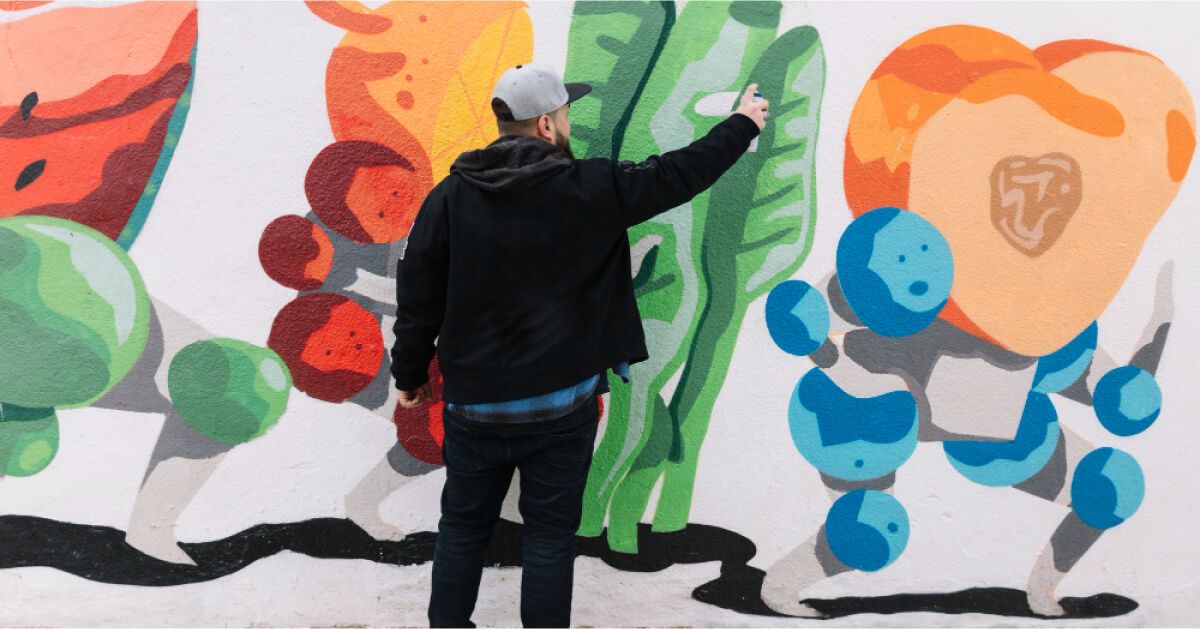
Teams collaborate to create unique art pieces inspired by the outdoor environment. The artworks are then displayed in an outdoor art exhibition. This activity promotes creativity, teamwork, and appreciation for nature.
Example: Provide teams with art supplies and a designated area. Teams work together to create outdoor artworks, such as paintings, sculptures, or installations. The art pieces are exhibited for everyone to enjoy.
49. Outdoor photography scavenger hunt:
Provide teams with cameras or smartphones and a list of specific outdoor scenes or objects to capture in photographs. Teams collaborate to take creative and compelling photos that match the criteria.
Example: Each team receives a list of items or scenes to photograph, such as a sunrise, a reflection in water, or a wildlife sighting. Teams explore the outdoor area to capture these moments.
50. Beach volleyball tournament:
Organize a beach volleyball tournament where teams compete in matches against each other. This activity promotes teamwork, communication, and friendly competition in a lively outdoor setting.
Example: Set up a beach volleyball court and divide the group into teams. Teams compete in matches, strategizing to score points and secure victory.
51. Outdoor knot relay:
Teams compete in a relay race where they must tie specific knots correctly within a set time. This activity promotes teamwork, quick thinking, and knot-tying skills.
Example: Each team member takes a turn racing to a designated knot-tying station. They must tie a specific knot accurately before the next teammate can start.
52. Outdoor nature collages:
Teams collect natural materials like leaves, flowers, and twigs to create intricate collages outdoors. This artistic activity encourages creativity, collaboration, and appreciation for nature's beauty.
Example: Provide each team with adhesive materials and a designated area. Teams gather various natural items and collaborate to create unique collages.
53. Outdoor alphabet hunt:
Teams search for objects in the outdoor environment that correspond to each letter of the alphabet. This activity promotes observation, teamwork, and creativity.
Example: Teams explore the area to find objects that start with each letter of the alphabet. For example, "A" could be an acorn, "B" a butterfly, and so on.
54. Outdoor circle of trust:
Participants stand in a circle, and each person takes turns sharing a personal goal or aspiration. The team provides support, encouragement, and accountability.
Example: Participants share their individual goals or aspirations, whether personal or professional. The team responds with positive words, encouragement, and suggestions for achieving those goals.
55. Outdoor reverse charades:

One participant guesses while the rest of the team acts out the given word or phrase. This twist on charades encourages teamwork, creativity, and active participation.
Example: One participant closes their eyes while the team acts out the chosen word or phrase. The goal is for the participant to guess the correct answer based on their teammates' actions.
56. Outdoor collaborative art mural:
Teams collaborate to create a large outdoor mural using chalk, paint, or other materials. This activity promotes teamwork, creativity, and artistic expression.
Example: Each team is assigned a section of a wall or pavement. Teams work together to create a mural that reflects their collective vision and creativity.
57. Outdoor nature mandala:
Teams create intricate mandalas using natural materials like petals, leaves, and stones. This meditative activity encourages creativity, teamwork, and a sense of unity with nature.
Example: Each team gathers a variety of natural materials and collaborates to arrange them into beautiful mandalas on the ground.
58. Outdoor blindfolded drawing:
One team member wears a blindfold while another guides their hand to create a drawing. This activity promotes trust, communication, and collaborative creativity.
Example: One participant wears a blindfold, while another gently guides their hand to draw a specific object or scene.
59. Outdoor marshmallow catapult challenge:

Teams build catapults using outdoor materials and use them to launch marshmallows to hit targets. This activity encourages engineering, teamwork, and problem-solving.
Example: Provide teams with materials like sticks, rubber bands, and spoons. Teams design and build their catapults before competing to hit targets with launched marshmallows.
60. Outdoor group reflection:
Teams gather in a circle to reflect on a shared experience or challenge. This activity promotes open communication, active listening, and mutual understanding.
Example: After completing an outdoor challenge or activity, teams gather to discuss their experiences, insights, and lessons learned.
61. Outdoor water balloon launcher:
Teams construct water balloon launchers using rubber bands and other materials. They compete to launch water balloons the farthest distance. This activity enhances teamwork, creativity, and physics knowledge.
Example: Teams collaborate to design and build water balloon launchers. Each team takes turns launching water balloons and measuring the distances achieved.
62. Outdoor creative camouflage:
Teams create camouflage patterns using natural materials that blend in with a specific outdoor environment. This activity encourages creativity, teamwork, and an understanding of natural adaptation.
Example: Teams select a specific area and collaborate to create camouflage patterns using materials like leaves, branches, and dirt.
63. Outdoor rhythm circle:
Teams use clapping, stomping, and other rhythmic movements to create unique beats and patterns in a circle. This musical activity promotes collaboration, rhythm, and creativity.
Example: Participants form a circle and take turns adding rhythmic patterns to the collective beat using clapping, stomping, or other movements.
64. Outdoor human sculptures:

Teams create human sculptures by posing and arranging team members in creative and visually interesting ways. This artistic activity promotes teamwork, creativity, and communication.
Example: Teams collaborate to design and create human sculptures using team members as "living statues." They can experiment with different poses and arrangements.
65. Outdoor word association game:
Teams stand in a circle and take turns saying words related to a chosen theme. This activity promotes quick thinking, communication, and creativity.
Example: Choose a theme like "nature." Team members take turns saying words associated with nature, such as "tree," "river," "sun," and so on.
66. Outdoor problem-solving relay:
Teams navigate through an outdoor course with various problem-solving challenges at each station. This activity promotes critical thinking, teamwork, and adaptability.
Example: Set up different stations with problem-solving challenges. Teams must solve each challenge to progress through the course.
67. Outdoor musical chairs:
Play a game of musical chairs outdoors, using outdoor furniture or markers on the ground. This activity promotes teamwork, coordination, and friendly competition.
Example: Place outdoor chairs or markers in a circle. Participants walk around the chairs while music plays, and when the music stops, they must quickly find a seat.
68. Outdoor reverse pictionary:
One team member describes a word or phrase without showing it, while their teammates attempt to guess what it is. This activity encourages effective communication, teamwork, and creative thinking.
Example: One participant describes a word or phrase without revealing it, while their teammates try to guess based on the description.
69. Outdoor problem-solving escape:
Teams work together to solve a series of outdoor puzzles and riddles, unlocking clues that lead to a final destination. This activity promotes critical thinking, teamwork, and collaboration.
Example: Set up an outdoor escape game with puzzles and clues hidden around the area. Teams must solve each puzzle to reveal the next clue and ultimately reach the final destination.
70. Outdoor a-frame challenge:
Teams construct A-frame structures using sticks and ropes, aiming to create stable and functional designs. This engineering activity promotes teamwork, creativity, and problem-solving.
Example: Provide teams with sticks and ropes. They collaborate to design and build A-frame structures, testing their stability and functionality.
71. Outdoor story chain:

Teams create a collaborative story by taking turns adding sentences or phrases. This activity promotes creativity, teamwork, and storytelling skills.
Example: Each team member adds a sentence or phrase to a growing story, building upon the contributions of their teammates.
72. Outdoor cooperative orienteering:
Teams navigate through an outdoor course using compasses and maps. However, each team member has a different piece of the map, requiring collaboration to complete the course.
Example: Divide the team into groups and provide each member with a section of the map. Team members must communicate and collaborate to piece the map together and navigate the course.
73. Outdoor blindfolded obstacle course:
Teams guide blindfolded members through a challenging outdoor obstacle course using only verbal communication. This activity promotes trust, clear communication, and teamwork.
Example: Set up an obstacle course with various challenges. One team member is blindfolded while others guide them through the course using verbal instructions.
74. Outdoor team rock painting:
Teams paint rocks with positive messages, symbols, or artwork. These painted rocks can be placed around the outdoor area to spread positivity.
Example: Teams use paint to decorate rocks with colorful designs, inspirational messages, or team symbols. These rocks can be scattered around the outdoor space for others to discover.
75. Outdoor creative photography challenge:
Teams are given specific themes or concepts to capture through photographs in the outdoor environment. This activity encourages creativity, observation, and artistic expression.
Example: Each team receives a list of themes, such as "patterns in nature" or "reflections." Team members explore the outdoor area, capturing photos that align with their assigned themes.
76. Outdoor cooperative jigsaw puzzle:
Teams work together to assemble a giant jigsaw puzzle made from a large image. Each team assembles their puzzle piece, contributing to the complete picture.
Example: Divide the image into sections, and each team receives a puzzle piece. Teams collaborate to assemble their piece, forming a complete picture when all pieces are joined.
77. Outdoor team haiku writing:
Teams collaboratively write haikus inspired by the outdoor environment. This activity encourages creativity, teamwork, and concise expression.
Example: Teams brainstorm and write haikus that capture the beauty and essence of nature, using a syllable pattern of 5-7-5.
78. Outdoor positive affirmation circle:
Teams stand in a circle and share positive affirmations about each team member, promoting a supportive and encouraging atmosphere.
Example: Each team member takes turns sharing positive qualities or strengths of the person next to them in the circle.
79. Outdoor nature mandala creation:
Teams use natural materials like leaves, flowers, and stones to create intricate mandalas on the ground. This artistic activity encourages creativity, collaboration, and a connection with nature.
Example: Each team is given a designated area. They collaborate to arrange natural materials in intricate patterns, creating beautiful mandalas.
78. Outdoor puzzle relay race:

Teams complete a series of physical challenges, solving puzzle pieces at each station. As they solve each puzzle, they receive a clue to the next challenge.
Example: Set up puzzle stations with physical challenges. Teams solve puzzles to receive clues to the next challenge, racing to complete the course.
79. Outdoor memory sharing circle:
Teams gather in a circle and take turns sharing memorable outdoor experiences or personal stories related to nature. This activity promotes connection, empathy, and communication.
Example: Each team member shares a personal story or memory connected to outdoor experiences, fostering a deeper understanding within the group.
80. Outdoor sculpture garden:
Teams collaborate to create outdoor sculptures using natural materials. These sculptures can be displayed as a temporary art installation.
Example: Teams use materials like sticks, leaves, and stones to create sculptures that reflect their creativity and artistic vision.
81. Outdoor human bridge:
Teams work together to create a human bridge by interlocking arms. This activity requires careful coordination, communication, and physical balance.
Example: Team members stand in a line, interlocking arms to create a bridge. Another team member carefully walks across the human bridge.
82. Outdoor environmental debate:
Teams engage in a friendly debate about environmental topics, encouraging critical thinking, research, and effective communication.
Example: Teams research and prepare arguments for or against an environmental issue, then engage in a structured debate.
83. Outdoor team water relay:
Teams participate in a water relay race, passing a container of water over obstacles to fill a final container. This activity promotes teamwork, coordination, and friendly competition.
Example: Teams race to fill a final container by passing a small cup of water over obstacles and through a relay line.
84. Outdoor sensory scavenger hunt:
Teams search for outdoor items using their senses, such as finding something soft, fragrant, or rough. This activity encourages sensory awareness and teamwork.
Example: Each team is given a list of sensory descriptions, and they search for objects that match each description in the outdoor environment.
85. Outdoor poetry circle:

Teams collaborate to write and share nature-inspired poems in a circle. This activity promotes creativity, self-expression, and teamwork.
Example: Each team member contributes a line or stanza to a collaborative poem, resulting in a beautiful collection of nature-themed poetry.
86. Outdoor word relay:
Teams race to spell out words related to nature or teamwork using their bodies, forming letters with their bodies in a relay format.
Example: Teams spell out words like "UNITY" or "NATURE" by forming letters with their bodies as they race to complete the relay.
87. Outdoor environmental trivia challenge:
Teams answer trivia questions related to environmental topics, encouraging teamwork, knowledge sharing, and learning.
Example: Teams compete to answer environmental trivia questions, earning points for each correct answer.
88. Outdoor collaborative storytelling:
Teams take turns adding sentences to a collective outdoor story, building upon each other's contributions and promoting creativity, collaboration, and storytelling skills.
Example: Each team member adds a sentence to an ongoing outdoor story, creating a unique and imaginative narrative.
89. Outdoor map-making adventure:
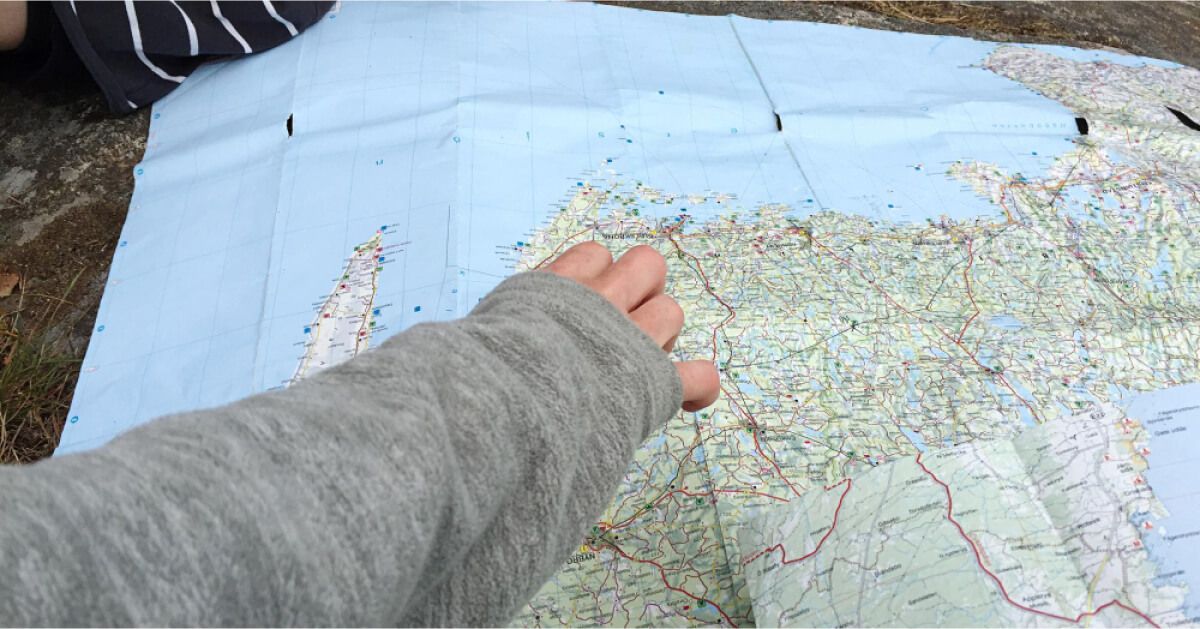
Teams use maps and markers to create their own map of the outdoor area, marking interesting features or landmarks they discover.
Example: Teams explore the outdoor space and mark significant locations on their maps, sharing their findings with the group.
90. Outdoor blindfolded nature identification:
Teams use their senses other than sight to identify different outdoor items or plants while blindfolded. This activity enhances sensory perception and teamwork.
Example: Team members are blindfolded and use their sense of touch, smell, and sound to identify various objects or plants in the outdoor area.
91. Outdoor natural sound composition:
Teams collect natural sounds from the environment and create a unique composition or soundtrack using those sounds. This activity encourages creativity, teamwork, and a heightened appreciation for sounds in nature.
Example: Teams use recording devices or smartphones to capture natural sounds such as birdsong, rustling leaves, or flowing water. They then collaborate to arrange these sounds into a harmonious composition.
92. Outdoor mindful sketching:
Teams engage in mindful sketching, using the outdoor environment as inspiration. This activity promotes relaxation, observation, and creative expression.
Example: Teams find a comfortable spot outdoors and sketch scenes or objects they find interesting. The focus is on being present in the moment and capturing the essence of what they observe.
93. Outdoor nature weaving:
Teams create woven patterns using natural materials like grass, twigs, and leaves. This activity promotes creativity, collaboration, and a connection with the environment.
Example: Each team weaves intricate patterns using natural materials, resulting in unique and beautiful woven designs.
94. Outdoor environmental photo booth:
Teams set up an outdoor photo booth with themed props and backgrounds, encouraging creative and playful photo sessions.
Example: Teams design and set up a photo booth in an outdoor area, complete with props like hats, scarves, and signs. Team members take turns posing for fun game and memorable photos.
95. Outdoor environmental art gallery:
Teams create artwork inspired by the outdoor environment and host an art gallery to display their creations.
Example: Teams use a variety of art materials to create paintings, drawings, or sculptures that reflect the beauty of nature. The art pieces are displayed in an outdoor gallery for everyone to appreciate.
96. Outdoor nature weights and balances:
Teams experiment with natural materials to create a balance or weight distribution system. This activity promotes creativity, problem-solving, and collaboration.
Example: Teams use sticks, rocks, and other materials to create makeshift balances or scales, experimenting with different configurations to achieve equilibrium.
97. Outdoor chain reaction challenge:
Teams design and construct a chain reaction using outdoor materials, where each action triggers the next. This activity promotes creativity, engineering, and teamwork.
Example: Teams create a chain reaction using items like dominoes, ramps, and balls. As one action sets off the next, the chain reaction unfolds.
98. Outdoor guided storytelling walk:
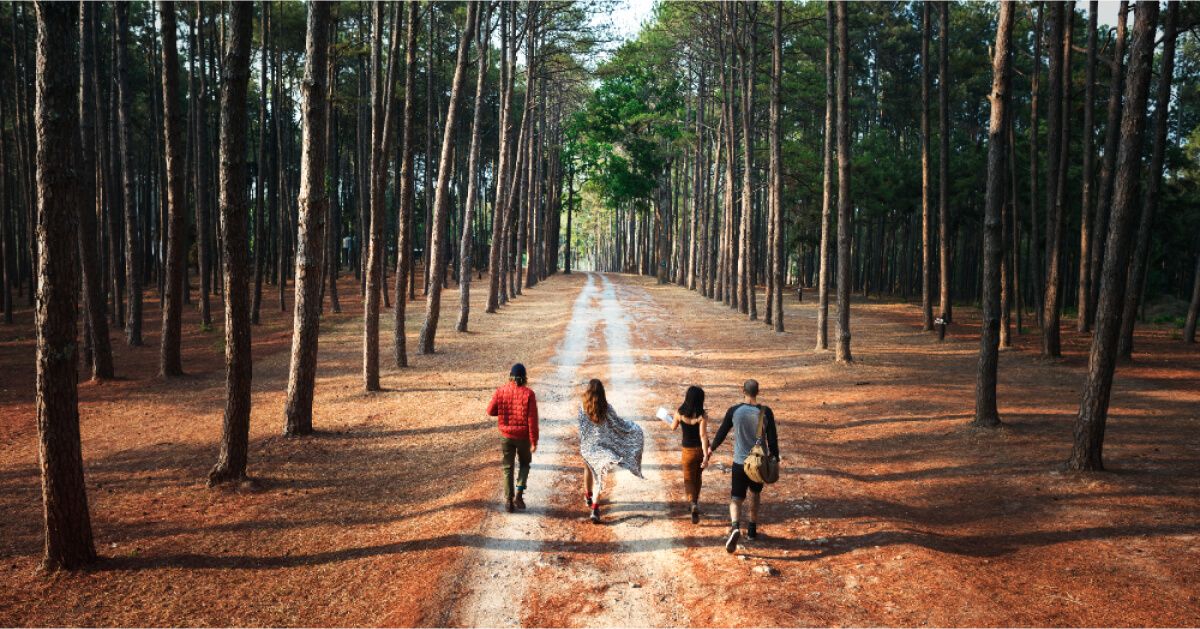
Teams take a guided nature walk while a facilitator tells an engaging story related to the environment. This activity promotes active listening, imagination, and a deeper connection with nature.
Example: Teams embark on a nature walk led by a facilitator who shares a captivating story related to the outdoor surroundings.
99. Outdoor cloud watching and interpretation:
Teams lie on the grass and observe cloud formations, then share interpretations of the shapes they see. This activity encourages creativity, imagination, and collaboration.
Example: Team members lie down and look up at the sky, discussing the different cloud shapes they see and sharing their interpretations.
100. Outdoor eco-friendly art installation:
Teams create outdoor art installations using eco-friendly materials and natural surroundings. This activity combines art, environmental awareness, and teamwork.
Example: Teams use recyclable materials, leaves, and other natural elements to create unique outdoor art installations that convey a message about environmental sustainability.
101. Outdoor team reflection and vision board:
Teams reflect on their shared experiences and collaborate to create vision boards that represent their collective goals and aspirations.
Example: After an outdoor challenge or activity, teams gather to discuss their experiences and then work together to create vision boards that visually depict their future goals.
102. Outdoor wildlife tracking and identification:
Teams learn to identify tracks and signs of wildlife in the outdoor environment, enhancing observation skills, teamwork, and nature awareness.
Example: Teams explore the outdoor area, identifying animal tracks, scat, and other signs left by wildlife.
103. Outdoor story stones creation:
Teams paint or decorate stones with images related to nature, storytelling, or team values. These stones can be used for collaborative storytelling or as decorative tokens.
Example: Teams paint stones with images of animals, landscapes, or objects. They can then use these stones to create collaborative stories by picking stones in turn.
104. Outdoor geocaching adventure:
Teams participate in a real-life treasure hunt using GPS coordinates to locate hidden caches. This activity promotes navigation, problem-solving, and outdoor exploration.
Example: Teams use GPS devices or smartphones to follow coordinates and find hidden caches in the outdoor area.
105. Outdoor human nature calendar:
Teams represent each month of the year by creating living scenes that depict seasonal changes, holidays, or nature-related events.
Example: Teams collaborate to form scenes representing each month, using team members as elements to represent holidays, changing seasons, or significant events.
106. Outdoor nature journaling:

Teams spend time outdoors journaling about their observations, thoughts, and reflections on the environment. This activity promotes mindfulness, self-expression, and connection with nature.
Example: Team members find a quiet spot to sit and write in their nature journals, capturing their thoughts and experiences in the outdoor setting.
107. Orienteering challenge:
Set up an orienteering course with marked checkpoints and maps. Teams must navigate through the outdoor terrain using compasses and maps to find each checkpoint. This activity promotes navigation skills, teamwork, and problem-solving.
Example: Provide teams with maps and compasses. Each team must use these tools to find and reach marked checkpoints in the outdoor area. The team that completes the course with the fastest time wins.
108. Outdoor movie night:
Transform an outdoor space into a cozy movie theater by setting up a projector and a large screen. Teams collaborate to choose a movie, set up seating, and create a movie night ambiance. This activity encourages teamwork, creativity, and relaxation.
Example: Assign teams to select a movie and gather supplies for a comfortable outdoor movie night experience. Teams work together to set up seating, distribute snacks, and create a memorable movie night under the stars.
109. Tree identification challenge:
Engage teams in a tree identification challenge where they must correctly identify various tree species in the outdoor environment. This activity promotes knowledge of nature, teamwork, and observation skills.
Example: Provide teams with field guides or reference materials on local tree species. Teams explore the area and work together to identify trees based on their leaves, bark, and other characteristics.
110. Nature-inspired art contest:
Challenge teams to create art pieces inspired by the natural surroundings. Teams can use materials like leaves, twigs, and rocks to craft unique artworks. This activity promotes creativity, teamwork, and an appreciation for nature's beauty.
Example: Provide teams with a variety of natural materials and art supplies. Teams collaborate to create original art pieces using elements they find in the outdoor environment.
111. Outdoor math challenge:
Organize a math challenge where teams solve math problems related to the outdoor setting. This activity encourages mathematical thinking, teamwork, and problem-solving.
Example: Prepare a set of math problems that involve measurements, calculations, or geometry related to the outdoor environment. Teams work together to solve these problems and compete to see who can complete them accurately and quickly.
112. Outdoor team-building relay:
Create a relay race with a series of team-building challenges at each station. Teams must complete each challenge before moving on to the next, fostering teamwork, communication, and problem-solving.
Example: Set up a relay course with stations that require activities like building a human pyramid, solving a puzzle, or navigating an obstacle course. Teams collaborate to complete each challenge and race to the finish line.
113. Outdoor survival skills workshop:
Arrange for an outdoor survival skills workshop led by an expert. Teams learn essential wilderness survival techniques, such as shelter-building, fire-starting, and navigation. This activity promotes teamwork, knowledge sharing, and preparedness.
Example: Invite a survival expert to teach teams various skills, such as constructing a shelter from natural materials, starting a fire without matches, and finding food and water sources in the wilderness.
114. Outdoor treasure hunt:
Organize a treasure hunt where teams follow a series of clues and riddles that lead them to hidden treasures in the outdoor area. This activity promotes problem-solving, teamwork, and the thrill of discovery.
Example: Provide teams with a treasure map and a set of clues that guide them to different locations in the outdoor space. Teams must work together to decipher the clues and find the hidden treasures.
115. Outdoor photography storytelling:
Challenge teams to tell a compelling story using photographs taken in the outdoor environment. Teams must capture a series of images that convey a narrative or theme. This activity encourages creativity, teamwork, and storytelling through photography.
Example: Assign each team a specific theme or concept for their photo story. Teams collaborate to capture a series of photographs that tell a story related to their chosen theme.
116. Outdoor wildlife observation:
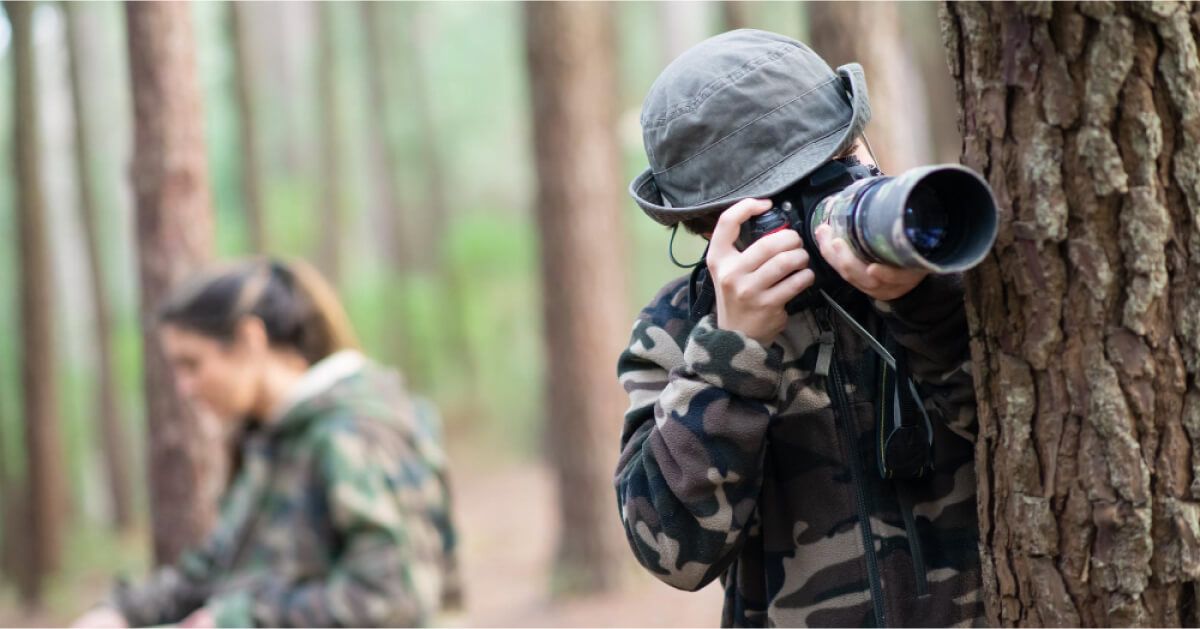
Encourage teams to observe and document local wildlife in the outdoor area. Teams use binoculars and cameras to identify and photograph animals and birds. This activity promotes teamwork, wildlife knowledge, and appreciation for nature.
Example: Provide teams with binoculars, field guides, and cameras. Teams collaborate to spot and document wildlife, noting the species and behaviors they observe in the outdoor environment.
117. Outdoor environmental puzzle:
Set up an environmental puzzle challenge where teams must put together a large puzzle using pieces scattered throughout the outdoor area. This activity promotes teamwork, problem-solving, and attention to detail.
Example: Disassemble a large image or puzzle into individual pieces and scatter them in the outdoor space. Teams must search for and collect puzzle pieces, then work together to reassemble the puzzle.
118. Outdoor plant identification:
Teams engage in a plant identification challenge where they must correctly identify various plant species in the outdoor environment. This activity encourages botanical knowledge, teamwork, and observation skills.
Example: Provide teams with field guides or reference materials on local plant species. Teams explore the area and collaborate to identify plants based on their leaves, flowers, and other characteristics.
119. Outdoor cooking competition:
Challenge teams to compete in an outdoor cooking competition where they prepare dishes using campfire cooking methods. This activity promotes culinary creativity, teamwork, and adaptability.
Example: Provide teams with a variety of ingredients and outdoor cooking equipment. Teams collaborate to create and present dishes cooked over open flames, showcasing their culinary skills and teamwork.
120. Outdoor problem-solving relay:
Create a relay race with a series of outdoor problem-solving challenges at each station. Teams must solve puzzles, riddles, or physical challenges before moving on to the next station. This activity fosters teamwork, critical thinking, and quick decision-making.
Example: Set up a relay course with stations that require traditional team building activity like solving a logic puzzle. Teams collaborate to conquer each challenge and race to the finish line.
121. Outdoor leadership challenge:
Engage teams in a leadership challenge where each member takes a turn leading the team through a specific outdoor task or activity. This activity promotes leadership development, teamwork, and communication skills.
Example: Assign different outdoor tasks or challenges to each team, such as building a shelter or navigating a trail. Rotate leadership roles within the teams, allowing each member to lead their team through a challenge.
122. Outdoor scavenger hunt with a twist:
Organize a scavenger hunt with a twist by providing teams with unusual or unexpected items to find in the outdoor area. This activity encourages creativity, teamwork, and problem-solving as teams search for unique items.
Example: Create a list of quirky and unexpected items, such as a feather from a specific bird or a rock shaped like an animal. Teams must use their creativity and collaboration to locate and present these unusual items.
123. Outdoor team-building escape room:
Set up an outdoor escape room experience with a storyline, puzzles, and challenges that teams must solve to "escape" within a time limit. This activity promotes collaboration, critical thinking, and creativity.
Example: Design an outdoor escape room scenario with themed puzzles and challenges. Teams work together to decipher clues, solve riddles, and progress through the storyline to complete the escape room adventure.
124. Outdoor art installation:
Challenge teams to create large-scale art installations using natural materials found in the outdoor environment. Teams collaborate to design and build impressive outdoor artworks. This activity promotes creativity, teamwork, and environmental appreciation.
Example: Provide teams with access to a wide range of natural materials, such as logs, stones, and leaves. Teams collaborate to design and construct large-scale outdoor art installations that reflect their artistic vision.
125. Outdoor wildlife tracking:
Encourage teams to learn and practice wildlife tracking skills in the outdoor setting. Teams use tracking guides and tools to identify and follow animal tracks and signs. This activity promotes teamwork, wildlife knowledge, and connection with nature.
Example: Provide teams with tracking guides and tools, such as plaster casts for making tracks. Teams collaborate to identify and follow animal tracks and signs, documenting their findings.
126. Outdoor team-building puzzle competition:
Organize a team-building puzzle competition where teams must complete various puzzles and brain teasers within a time limit. This activity promotes problem-solving, teamwork, and friendly competition.
Example: Set up a puzzle competition with a variety of puzzles, such as jigsaw puzzles, logic puzzles, and riddles. Teams collaborate to solve as many puzzles as they can within the allotted time.
127. Outdoor nature journaling:
Encourage teams to keep nature journals and record observations, sketches, and reflections on the outdoor environment. This activity promotes mindfulness, creativity, and a deeper connection with nature.
Example: Provide teams with nature journals and art supplies. Teams spend time exploring the outdoor area, recording observations of plants, animals, and natural features in their journals.
128. Outdoor problem-solving hike:
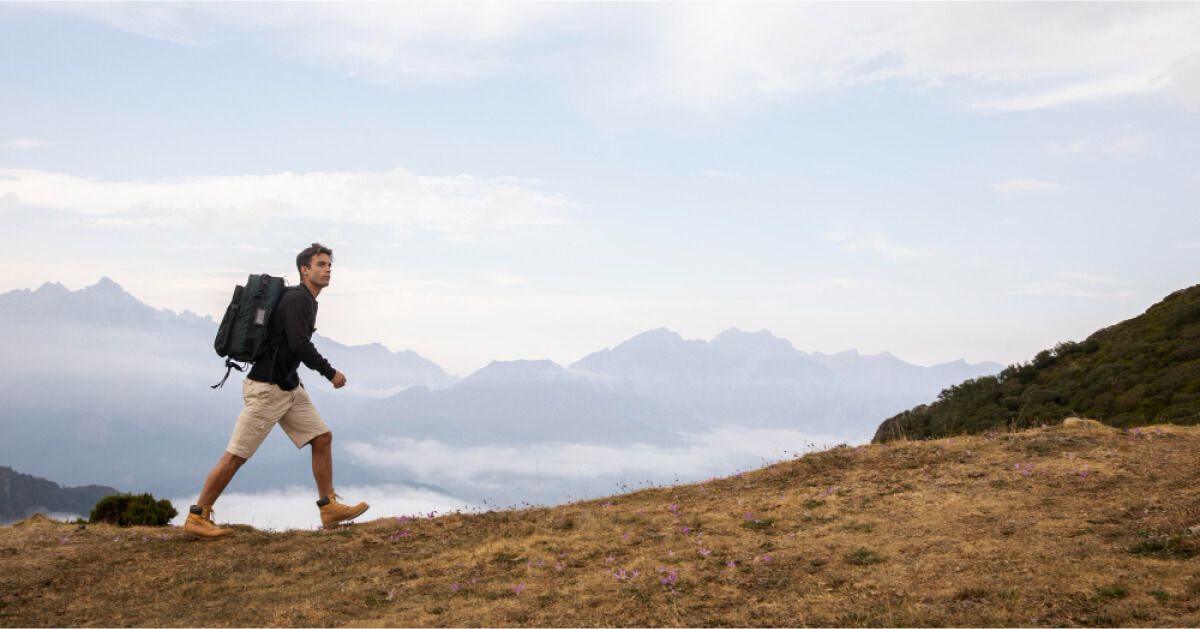
Lead teams on a guided hike through a scenic outdoor area, stopping at points along the way to solve nature-related puzzles and challenges. This activity promotes teamwork, problem-solving, and appreciation for the natural world.
Example: Plan a hiking route with designated puzzle or challenge stations. Teams collaborate to solve these outdoor challenges as they enjoy the scenic beauty of the hike.
129. Outdoor team-building board games:
Set up outdoor versions of board games that require teamwork and strategy, such as giant chess, outdoor Scrabble, or life-sized board games. This activity promotes collaboration, strategic thinking, and friendly competition.
Example: Arrange for oversized game boards and pieces in an outdoor area. Teams take turns playing classic board games like chess, Scrabble, or checkers, strategizing to win.
130. Outdoor geology exploration:
Engage teams in a geology exploration activity where they investigate and identify different types of rocks, minerals, and geological formations in the outdoor environment. This activity promotes geological knowledge, teamwork, and observation skills.
Example: Provide teams with geological field guides and tools like magnifying glasses. Teams explore the outdoor area, identifying and documenting various rocks, minerals, and geological features.
131. Outdoor treehouse building:
Challenge teams to design and build small treehouses or elevated structures using natural materials found in the outdoor environment. This activity promotes creativity, teamwork, and engineering skills.
Example: Provide teams with access to materials like branches, leaves, and vines. Teams collaborate to design and construct small treehouses or elevated structures within a specified time frame.
132. Outdoor ecology challenge:
Create an outdoor ecology challenge where teams must complete tasks related to environmental conservation and sustainability. This activity promotes ecological awareness, teamwork, and problem-solving.
Example: Design a series of tasks such as planting native species, creating wildlife habitats, or conducting a litter cleanup. Teams collaborate to complete these eco-friendly challenges in the outdoor environment.
133. Outdoor adventure race:
Organize an outdoor adventure race that combines elements of hiking, biking, and navigation. Teams must follow a trail, solve clues, and complete physical challenges. This activity promotes teamwork, endurance, and outdoor adventure.
Example: Plan an adventure race with checkpoints along a trail. Teams collaborate to navigate, solve puzzles, and complete physical challenges as they race to the finish line.
134. Outdoor mindfulness and meditation:
Lead teams in an outdoor mindfulness and meditation session, focusing on connecting with nature, reducing stress, and promoting well-being. This activity enhances relaxation, mindfulness, and team unity.
Example: Find a serene outdoor location and guide teams through a mindfulness and meditation session. Participants focus on their breath and surroundings, cultivating a sense of peace and unity.
135. Outdoor environmental debate:
Engage teams in an environmental debate where they discuss and present arguments on environmental topics, such as conservation, renewable energy, or climate change. This activity promotes research, communication, and critical thinking.
Example: Assign teams specific environmental topics to research and debate. Teams collaborate to prepare arguments and presentations, engaging in a lively and informative outdoor debate.
136. Cardboard boat build
In this outdoor team-building game, teams use cardboard and duct tape to construct a boat that must float with at least one team member inside. The goal is to successfully sail their boat across a small body of water without sinking. This team-building outdoor activity promotes problem-solving, creativity, and collaboration.
Example: Each team is given an equal amount of materials and a set time to construct their boat. Once built, teams race their boats across a pond or pool. The first to reach the finish line without sinking wins!
137. Cornhole tournament
Cornhole is a simple yet competitive outdoor game for office employees, where teams take turns tossing bean bags onto a slanted board with a hole. The game enhances coordination, precision, and friendly rivalry while fostering team spirit.
Example: Divide the participants into teams and set up multiple cornhole boards. Teams go head-to-head, earning points by landing bean bags on the board or sinking them through the hole. The team with the highest score after several rounds wins.
138. Field day
A fun and high-energy team-building outdoor activity, Field Day consists of multiple events like sack races, three-legged races, and a tug-of-war. It's an excellent way to encourage teamwork, physical fitness, and team spirit.
Example: Organize a group outdoor activity where teams rotate through different stations, competing in classic relay races and obstacle challenges. The team with the most wins across all events is crowned the Field Day champion.
139. High ropes course
A thrilling team-building outdoor activity, a high ropes course consists of various rope obstacles at significant heights. It pushes participants out of their comfort zones, fostering trust, communication, and problem-solving skills.
Example: Participants navigate rope bridges, swinging logs, and zip lines while working together to complete the course. Each challenge requires clear communication and teamwork to ensure success.
140. City chase
This outdoor team-building game transforms a city into a giant playground where teams race against time to complete a series of challenges. Participants use problem-solving, strategy, and navigation skills to advance through the chase.
Example: Teams receive a set of clues that lead them to different landmarks where they must complete physical or mental challenges. The first team to solve all clues and reach the final checkpoint wins the chase.
141. Company picnic with team games
A relaxing yet engaging outdoor activity for office employees, a company picnic provides a casual environment for teams to bond. Add fun outdoor teambuilding games like frisbee, relay races, and giant Jenga for extra engagement.
Example: Set up a friendly frisbee tournament, a three-legged race, and a potato sack challenge. Encourage employees to bring their families, turning it into a full-fledged team bonding event.
142. Miniature golf challenge
This corporate team-building game outdoor is a low-pressure, fun way for employees to engage with one another while competing in a game of mini-golf. It encourages strategic thinking and team collaboration.
Example: Teams go through a mini-golf course, tallying their scores along the way. To increase engagement, add fun rules like having a teammate take a shot blindfolded while others guide them verbally.
143. Beach cleanup challenge
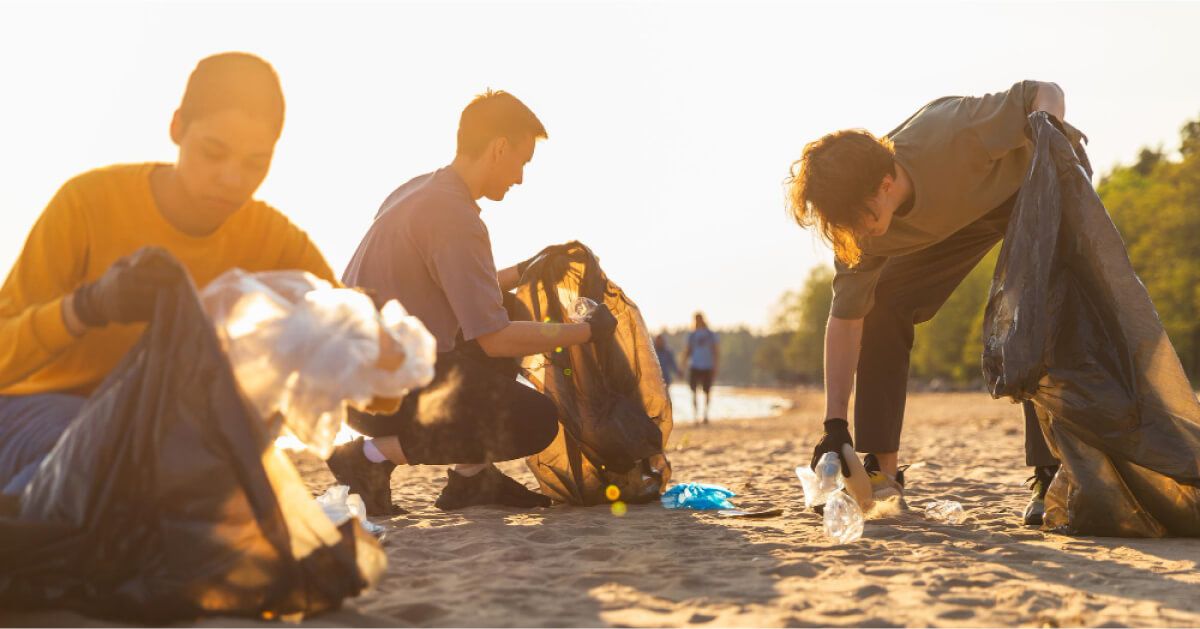
A meaningful outdoor activity corporate team-building, this challenge involves teams working together to clean up a beach while making it a fun competition. It combines teamwork with environmental responsibility.
Example: Assign each team a section of the beach and a time limit. The team that collects the most litter wins. Encourage participants to share observations on how small efforts can create a bigger impact.
144. Tree planting for a cause
Encourage sustainability and teamwork by engaging in a team-building outdoor activity that benefits the environment. Teams work together to plant trees, contributing to a greener future.
Example: Each team receives a set of saplings and a designated planting area. They must plant and water the trees while documenting the process. Later, they can revisit the area to see their collective efforts grow.
145. Random acts of kindness race
This fun outdoor team-building activity encourages teams to spread positivity while working together. Teams race to complete as many random acts of kindness as possible within a set time.
Example: Teams perform kind deeds like leaving thank-you notes for strangers, handing out flowers, or buying coffee for someone in line. The team with the most completed acts wins.
146. Obstacle course challenge
A high-energy outdoor team-building game that includes hurdles, balance beams, and rope climbs. It fosters resilience, trust, and teamwork while encouraging friendly competition.
Example: Participants go through a physically engaging course where they must help teammates over obstacles or through tunnels. The first team to complete all challenges wins.
147. Sports day tournament
Turn a classic team-building outdoors event into a friendly competition with sports like soccer, basketball, and volleyball. A great way to encourage teamwork and healthy competition.
Example: Teams compete in a round-robin format, earning points in different sports. The team with the highest cumulative points wins the tournament.
148. Volleyball tournament
An exciting outdoor fun activity where teams compete in a volleyball match on the beach or in an open field. It encourages communication, agility, and teamwork.
Example: Divide participants into teams and set up a volleyball tournament. To add a twist, introduce challenges like playing with one hand or setting a maximum number of touches per team.
149. Rafting adventure
A high-adrenaline team-building outdoor activity where teams navigate rapids while working in perfect sync. It enhances trust, leadership, and quick decision-making.
Example: Teams receive paddles and safety gear and must maneuver a river course together, avoiding obstacles and keeping their raft afloat to reach the finish line.
150. Paintball strategy game
This outdoor team-building game requires teams to strategize and communicate effectively while attempting to eliminate opponents. It builds quick thinking, collaboration, and resilience.
Example: Teams are given different objectives, such as capturing a flag or defending a base, and must work together to outplay their opponents using teamwork and tactics.
151. Outdoor yoga & mindfulness
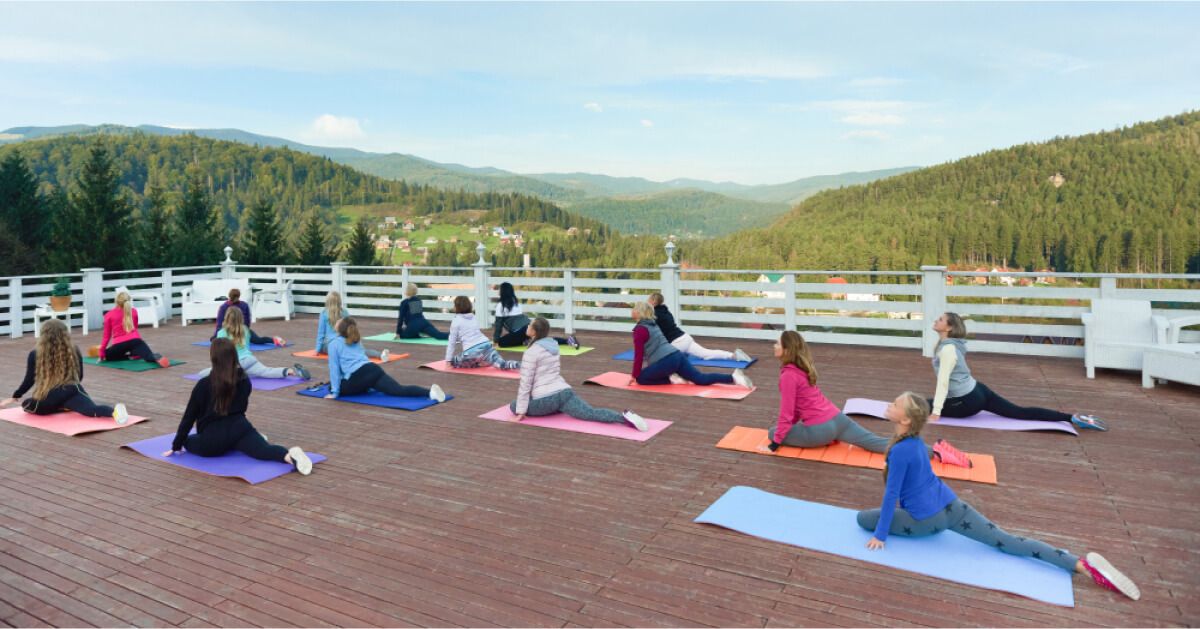
A peaceful outdoor activity corporate team-building that enhances focus, well-being, and relaxation. It’s perfect for post-meeting wind-downs or stress-relief retreats.
Example: An instructor leads a guided yoga session in a serene park setting, incorporating breathing exercises and meditation to help teams reset and reconnect.
152. Bike buildathon
A team-building outdoor activity that combines teamwork with charity. Teams work together to assemble bikes that will be donated to children in need.
Example: Teams are given disassembled bike parts and must work together to put them together. The first team to successfully assemble and test-ride their bike wins.
153. Egg drop challenge
A creative outdoor problem-solving activity, where teams design protective structures to prevent an egg from breaking when dropped from a height.
Example: Using materials like straws, paper, and tape, teams construct a device to keep their egg safe. The structure is then tested by dropping the egg from a predetermined height.
154. Capture the flag
A high-energy outdoor team-building game where teams strategize to steal the opposing team’s flag while defending their own. It encourages teamwork, agility, and tactical thinking.
Example: Teams divide into offense and defense. Players work together to retrieve the opponent’s flag without getting tagged and return it to their base to win.
155. Hiking team challenge
A fun outdoor team-building activity that combines hiking with team challenges along the trail. Participants develop endurance, leadership, and collaboration skills.
Example: Along the hiking route, teams complete challenges like identifying plants, solving riddles, or engaging in trust exercises before moving to the next checkpoint.
How to ensure safety during outdoor team-building events?
Safety should always be a priority when planning outdoor activities for office employees. While corporate team-building games outdoor are exciting and dynamic, they also come with potential risks. Ensuring a safe and well-organized event allows everyone to focus on having fun and building stronger connections.
- Conduct a risk assessment before the event: Before organizing outdoor team activities, assess the environment for potential hazards like uneven terrain, weather risks, or physical challenges. Identifying these early helps in planning necessary safety measures.
- Provide clear instructions and safety briefings: Before starting any fun outdoor team-building activities, ensure all participants understand the rules, safety guidelines, and emergency procedures. A quick briefing minimizes confusion and helps everyone feel confident.
- Have first aid and emergency plans in place: Whether hosting group outdoor activities or physically engaging challenges, having a stocked first-aid kit and a designated safety officer is essential. Knowing the nearest medical facility and having emergency contacts on hand is also crucial.
- Choose activities suited to all fitness levels: Not everyone has the same physical abilities, so select fun team activities that accommodate different fitness levels. Inclusive team bonding events ensure that no one feels left out or at risk.
- Ensure proper gear and hydration: For high-energy team-building outdoors, make sure participants wear appropriate clothing, footwear, and protective gear if needed. Providing water stations prevents dehydration, especially during intense activities.
- Monitor weather conditions and have a backup plan: Outdoor activities corporate team-building depend on good weather, but unexpected conditions can arise. Always check forecasts in advance and have an indoor backup plan in case of rain, excessive heat, or storms.
How to choose the right outdoor team-building activity for your organization?
Selecting the best team-building activities outdoor depends on your company’s goals, team size, and employee preferences. Whether you’re looking for outdoor problem-solving activities or high-energy outdoor team games, the right choice ensures maximum engagement and a positive team experience. Here’s how to find the perfect fit.
- Define your team-building objectives: Before choosing an activity, determine your goals—do you want to improve communication, boost morale, or enhance leadership skills? If problem-solving is a focus, opt for outdoor problem-solving activities, while trust-building may require physical team-building activities.
- Consider your team’s size and dynamics: Different activities work better for different team sizes. Smaller groups may benefit from outdoor group activities like escape challenges, while larger teams thrive in structured outdoor team-building games such as relay races or obstacle courses.
- Match activities to fitness and skill levels: Not every employee may be comfortable with intense team games outdoor. Choose outdoor games for employee engagement that accommodate all fitness levels, such as scavenger hunts or creative problem-solving challenges.
- Choose between competition or collaboration: Some teams thrive on friendly competition, making team-building games outdoor like Capture the Flag ideal. Others may prefer collaborative outdoor team games, such as a charity-focused activity or a large puzzle challenge.
- Factor in available space and resources: Outdoor locations influence your choice. Large open areas are great for physical team-building activities, while smaller spaces may be better suited for interactive outdoor team-building games that require minimal setup.
- Gather feedback and test different options: Employees are more engaged when they enjoy the activity. Get their input on preferred team-building activities outdoor and experiment with different formats to discover what works best for your team.
Role of pulse surveys in planning outdoor team-building activities
Pulse surveys are a valuable tool for understanding employee preferences, ensuring that outdoor team-building activities align with team needs and goals. Here’s how pulse surveys help in planning and optimizing outdoor fun activities for your team.
- Identify the best activities for your team: Not every group enjoys the same experiences. Pulse surveys help determine whether employees prefer physical team-building activities, outdoor problem-solving activities, or relaxed outdoor group activities. This ensures activities cater to all comfort levels and interests.
- Measure engagement and effectiveness: Running surveys before and after an event allows organizations to track how outdoor team games impact morale, collaboration, and energy levels. Understanding what works helps refine future corporate team-building games outdoor for better participation.
- Ensure inclusivity and accessibility: Some employees may prefer low-impact activities over intense team-building games outdoor. Pulse surveys give participants a voice, helping managers select team games outdoor that ensure everyone feels included and engaged.
- Enhance logistics and planning: Feedback gathered through pulse surveys provides insights into preferences for event timing, location, and duration. This helps streamline logistics, ensuring smooth execution of outdoor games for employee engagement.
- Adjust based on real-time feedback: If an activity wasn’t as engaging as expected, pulse surveys highlight what can be improved. This allows organizations to tweak future team-building activities outdoor to maximize enjoyment and participation.
- Create a continuous feedback loop for future events: Gathering feedback after each outdoor activity corporate team-building event helps track trends and refine strategies. Over time, organizations can build a bank of high-impact, well-loved outdoor team-building games that employees look forward to.
Conclusion
Outdoor team-building activities are a powerful way to foster collaboration, improve communication, and strengthen workplace relationships. Whether it’s team-building outdoor activities, outdoor problem-solving activities, or fun outdoor team-building activities, these experiences break the monotony of office life and create meaningful interactions among employees.
By using pulse surveys, organizations can gather valuable feedback before and after these events to ensure they align with team preferences and engagement levels. Tracking employee sentiment helps in selecting the most effective outdoor team activities, refining event planning, and making future team bonding events even more impactful.
To take team engagement a step further, platforms like CultureMonkey offer AI-powered employee feedback and pulse surveys, helping organizations measure the effectiveness of their outdoor games for employee engagement. With the right strategies and tools, businesses can create a thriving workplace culture built on teamwork, communication, and shared experiences.
FAQs
1. How often should team-building activities be held?
Team-building activities, held at least once a quarter, maintain employee engagement and foster cohesive teams. Regular sessions strengthen relationships, keep communication channels open, and refine collaborative skills, which are essential for cultivating a positive workplace culture, boosting employee morale, enhancing overall team synergy and productivity. They create a supportive environment where creativity thrives and ideas are freely exchanged.
2. Can team-building activities be conducted virtually?
Yes, team-building activities can be effectively conducted virtually through video conferencing platforms and collaborative online tools. Virtual activities promote inclusivity among remote employees, strengthen team bonds despite physical distance, and enhance teamwork skills essential for remote work dynamics. They also provide flexibility and accessibility, allowing teams to engage in meaningful interactions regardless of geographical location, fostering a cohesive and connected workforce.
3. How can team-building activities help in conflict resolution?
Team-building outdoor activities create opportunities for employees to build trust, improve communication, and foster mutual understanding. Whether through outdoor problem-solving activities or structured challenges, these experiences encourage collaboration and empathy, allowing teams to navigate disagreements constructively. By working together towards common goals, employees develop a culture of respect and cooperation, making conflict resolution a more seamless process.
4. Are team-building activities effective for remote teams?
Yes, virtual team-building activities outside and interactive online experiences are highly effective in strengthening team dynamics. Remote teams benefit from creative engagement methods that simulate team-building games outdoor, helping employees feel connected despite geographical distances. Just as outdoor team-building games promote teamwork in physical settings, virtual alternatives boost collaboration, morale, and cohesion, ensuring all employees feel valued.
5. What is the cost of organizing team-building activities?
The cost of team-building outdoor activities varies based on scale, location, and required resources. Expenses may include venue rentals, professional facilitators, and materials. Cost-effective options such as DIY challenges or activities organized by outdoor team-building companies can accommodate different budgets. Some physical team-building activities like scavenger hunts or trust exercises require minimal investment while delivering high engagement and collaboration.
6. How can team-building activities improve communication?
Outdoor activities corporate team building exercises encourage employees to practice active listening, articulate thoughts clearly, and work together to solve challenges. Engaging in team-building outdoors activities—whether through relay races, problem-solving challenges, or adventure-based experiences—enhances communication skills while promoting teamwork. These team-building outdoor activities also help break down hierarchical barriers, creating a more open and supportive work environment where employees communicate effectively.



